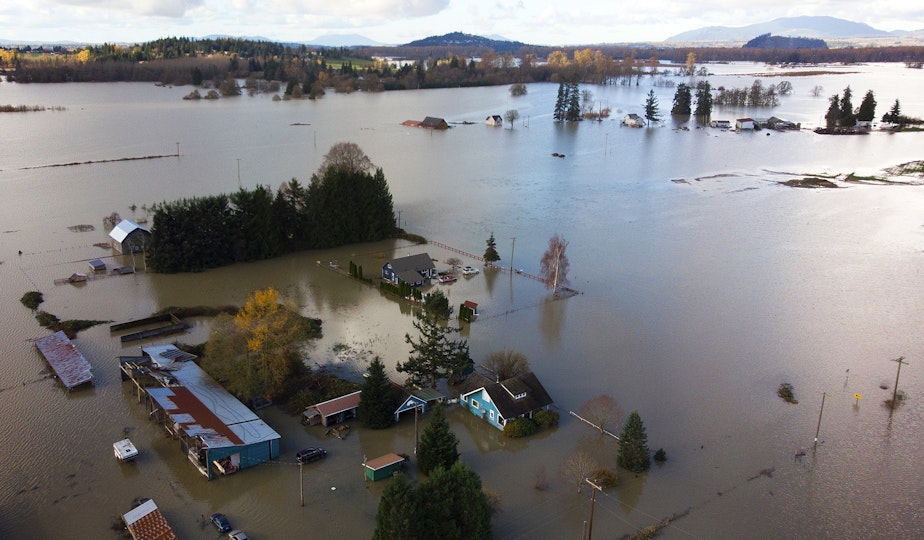Barriers prevent rural communities from accessing climate funds

Federal grants to help communities prepare for the effects of climate change are a major portion of the 2021 infrastructure law, but requirements like a "local match" can be a big barrier to rural jurisdictions accessing those funds.
In 2021, with much publicity, Congress finally passed an infrastructure bill.
Funding from the bill goes towards projects including rebuilding roads and bridges, funding new broadband initiatives, and helping communities respond to climate change.
But baked into that bill is a requirement that local municipalities provide matching funds to qualify for a portion of the federal support.
That precondition spells trouble for many rural communities.
"About 60% of the funding is going to require a local match," says Kristin Smith, applied researcher at Headwaters Economics. "Local matches are really features of federal funding, they have been for decades. But as we're thinking about how to help communities get the resources that they need, the local match can actually be a barrier to accessing that funding."
Sponsored
Smith says local matches are a way the federal government ensures that local communities are invested in these projects. If they have to put in some of their own money, they have skin in the game.
But building for resilience is more complicated than a lot of other projects. They take years to develop and plan, before the community even begins gathering funding. They're also committing to constructing and maintaining them.
"So when you're talking about having skin in the game, a local match doesn't really even get it the whole suite of ways that communities already have skin in the game just by planning these projects," Smith says.
Communities with smaller populations and limited tax bases have fewer options for raising revenue. Smith says that just seeing the required match can sometimes be enough to turn a community off of applying for funding.
"It can have a longer term burden, because it can actually be expensive to raise revenue to meet the local match," she says.
Sponsored
Smith is optimistic that the federal government will eventually move away from this system.
"We're seeing the federal agencies talk to communities and really rethink their practices," she says. "So that's a really exciting change."
Hoquiam and Aberdeen, on the west coast of the state, are in the thick of this process.
"We've had 17 federally declared disasters from flooding," explains Hoquiam City Administrator Brian Shay. "But in recent years, I would say that the flooding has been more frequent due to climate change, king tides and other atmospheric conditions."
Shay is trying to secure money for levees to protect Hoquiam and Aberdeen from flooding. But piecing together funding from a patchwork of agencies and jurisdictions has been complicated.
Sponsored
So far, Shay says the project has received $100 million in federal funding for the projects.
The cities have allocated $15 million of their own funding toward the levees. But that leaves $35.5 million that the cities need to match.
They've put in a capital budget request before the Washington state Legislature for the funding.
Shay says the communities can't afford to put more than $15 million of their own funding toward the project. Any additional support would have to come from residents, which Shay says is not really an option.
"Our community's just continuously been disadvantaged and economically challenged, and we just really can't put more burden on our citizens," he says.
Sponsored
It's not just the local match that has been daunting to the project. Shay notes that just writing the application for federal funding was a struggle.
"That application to FEMA was 46 pages long. There were things that had to be done by an economist, by an engineer, by a good narrative grant writer. It was not something that a small city could handle in house," Shay explains. "So our city council, at that time, took a leap of faith. And we spent $15,000 hiring HDR engineering."
That leap of faith worked out for Hoquiam and Aberdeen. They got the funding. Now Shay says the just need to get through the fourth quarter of this game, finding those matching funds.
"Federal funds come with a lot of strings attached," Shay says. "They're very necessary. But you know, they're daunting when you get them."






